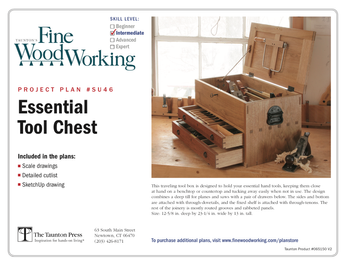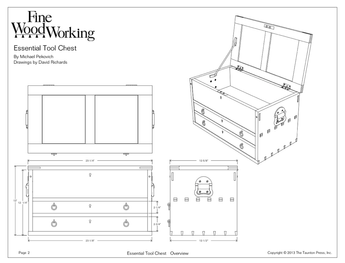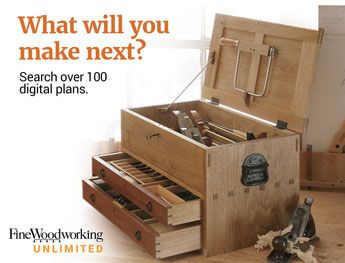Discussion Forum
Get It All!
UNLIMITED Membership is like taking a master class in woodworking for less than $10 a month.
Start Your Free TrialDiscussion Forum
Digital Plans Library
Member exclusive! – Plans for everyone – from beginners to experts – right at your fingertips.
Highlights
-
Shape Your Skills
when you sign up for our emails
This site is protected by reCAPTCHA and the Google Privacy Policy and Terms of Service apply. -
 Shop Talk Live Podcast
Shop Talk Live Podcast -
 Our favorite articles and videos
Our favorite articles and videos -
E-Learning Courses from Fine Woodworking
-
-
 Fine Woodworking New England Event
Fine Woodworking New England Event












Replies
Just me.. I'd run it throught the planer on both sides and then hand plane...
If the boards are already flat out of the planer there is really no need for the #7. It is to be used after the scrub plane to flatten the high spots left by the scrub planes concave blade, the long length of the #7 lets it ride the high spots instead of dropping up and down in the furrows left by the scrub plane. After flattening with the # 7 you would generally follow with a #4 smoother, or a #4 1/2 to smooth the surface, as it name implies. The jack is a compromise plane. As it name implies it is the jack of all planning but not really the ideal plane for most jointing and smoothing work.
Peter.. see if I got this right; you're looking to prep a face (and edges) of a rough board by hand before running it through a thicknesser??
I did that until I bought my scrub plane... it's a neat way of bypassing jointer limitations...
I'd do this...
http://forums.taunton.com/tp-knots/messages?msg=22577.7
I wouldn't bother with the smoother prior to thicknessing it. I used to keep the hand prep'd side down till the thicknesser had produced a decent face on the opposite side, flip the board over to catch anything I'd missed on the first side (rookieness) then finish smooth both faces afterwards...
One thing to keep an eye out for.. I donno the details of the L-V low angle jointer, but I'd be hesitant to get one if it didn't have an adjustable mouth. Additionally, I'd want to have more than a single blade; higher angle is often the only way to avoid tear-out in a highly figured board...
Smoother of choice is an L-N 4 1/2 c/w york pitch frog...
Mike Wallace
Stay safe....Have fun
I'd rather be beaten than flatten a face with anything but a scrub plane. Other planes will work, but the scrubber will do the job of flattening much faster. Once a board is flat, then the surface is further refined with the try plane (today's No. 7) and smoother. Substitute a jack plane (today's No. 5) for the No. 7 on shorter, narrower boards.
Certain words are bolded for a reason.
Good decision to use something other than your thickness planer for jointing since a thickness planer cannot joint a board without building silly-assed carrying boards or some other such nonsense.
If you want to edge joint two boards simultaneously, anything shorter (or narrower) than a No. 7 will be a waste of time.
If you had to buy one plane, the No. 7 is the one to buy. Get an extra blade and grind it with a pronounced camber to assist you with initial flattening.
This forum post is now archived. Commenting has been disabled